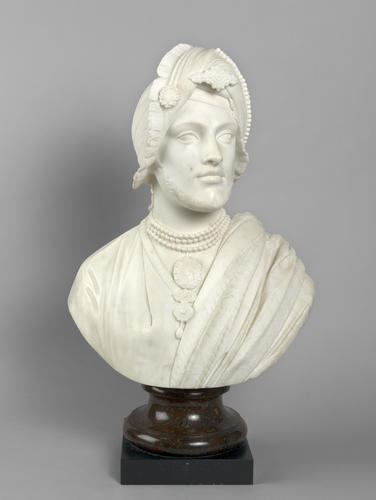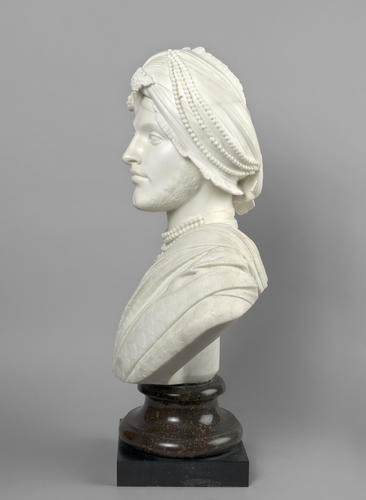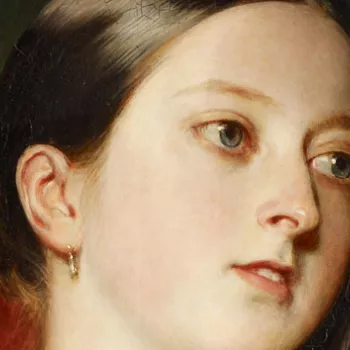Maharaja Dalip Singh c. 1850-6
Marble | 80.6 x 47.0 x 28.5 cm (excluding base/stand) | RCIN 41542
-
The youngest son of Maharaja Runjit Singh, Dalip Singh (1838-93) was declared Maharaja of the Punjab at the age of five in 1843. Following the British annexation of the territory in 1849 he was forced to renounce all claims of sovereignty in exchange for a British government pension of £40,000 per year. He converted to Christianity in 1853 and settled in England in 1854. In July that year he sat to Winterhalter for the well-known full length portrait commissioned by Queen Victoria. He adopted the life of a country squire, buying a house, Hatherop in Gloucestershire, and renting a sporting estate in Scotland. He eventually became disaffected and embittered with the British, reverted to Sikhism and launched a renewed claim on the Punjab. Although he had plans to return to India he died in France in 1893, having latterly achieved a reconciliation with Queen Victoria.
Marochetti's likeness follows Winterhalter's in almost all respects except for details of jewellery, and it seems likely that the sculptor studied the painting while making his bust. From correspondence it is evident that he also used photographs. He includes only the lower part of the central turban jewel, omitting the aigrette. The jewelled miniature of Queen Victoria was given to Dalip's father by Lord Auckland when he was Governor-General of India. The other pendant jewels were among those Dalip was allowed to retain following the annexation of the Punjab.
From correspondence between Marochetti and Miss Skerrett, Queen Victoria's dresser, it appears that the Queen's birthday gift to her husband in 1856 was a coloured plaster cast of the sculptor's model. The Queen recorded in her Journal that the bust had been ‘entirely spoilt, by being coloured’. By September 1857 Marochetti was working on the marble and reported that he had attempted to colour just the head, and ‘more lightly’. A fully coloured marble version of the bust survives in the possession of the sculptor's descendants. Since there is no trace of colour on the present bust, the Queen seems to have ordered a completely new version.
Text from Victoria & Albert: Art & Love.Provenance
Commissioned by Queen Victoria (£200, RA VIC/ADD T/232/104, quarter to December 1856) and Given to Prince Albert by Queen Victoria, on his birthday, 26th August 1856 [Victoria & Albert: Art & Love, London, 2010, pg 460]
-
Creator(s)
Acquirer(s)
-
Medium and techniques
Marble
Measurements
80.6 x 47.0 x 28.5 cm (excluding base/stand)
Category
Object type(s)












